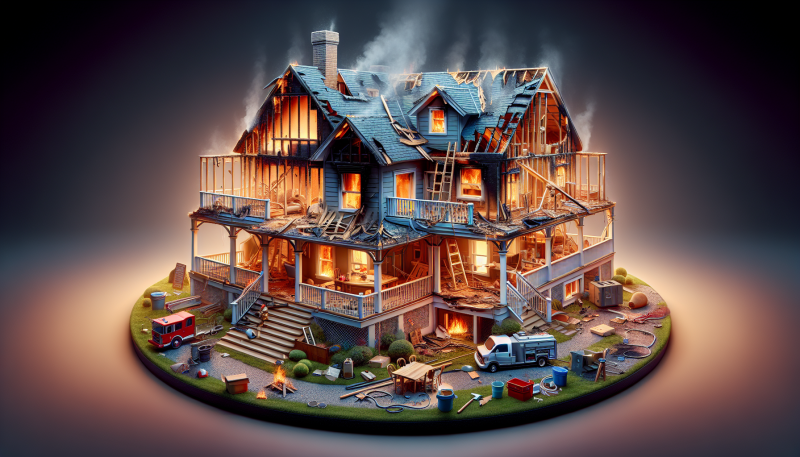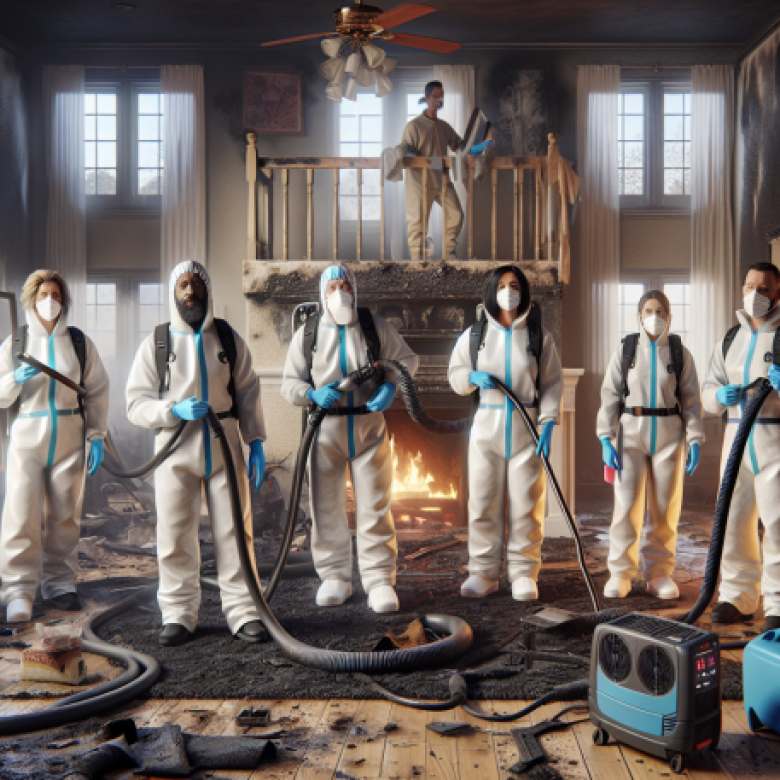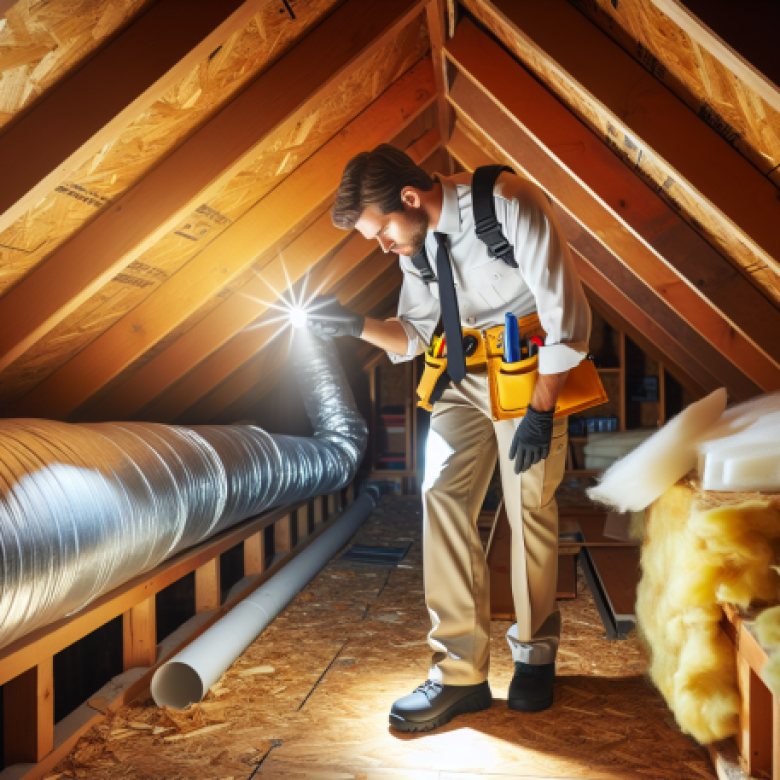Hidden Dangers of Fire Damage Restoration
Fire damage restoration is a critical process that involves more than just cleaning up the visible damage. While the immediate aftermath of a fire can be overwhelming, it’s essential to understand the hidden dangers that can arise during the restoration process. This article delves into the various risks associated with fire damage restoration, providing valuable insights for homeowners and business owners alike.
Fire damage restoration is not just about removing soot and smoke; it involves a comprehensive approach to ensure the safety and integrity of the property. Projekt Property Restoration is a fully licensed and insured company that specializes in commercial and residential property restoration. With over 16 years of experience, we are committed to providing quality service to our clients. Our headquarters is located at 20533 Biscayne Blvd Suite #1231, Aventura, FL 33180. You can reach us at 1-855-933-7935 or via email at Claims@ProjektFL.com.
Our mission is to restore properties that have been damaged by water, fire, mold, or biohazard incidents. We offer a wide range of restoration services, including water damage restoration, mold assessment and remediation, fire damage restoration, biohazard clean up, consulting, content cleaning, dehumidification, infrared thermal imaging, and reconstruction.
At Projekt Property Restoration, we understand the urgency of restoring your property as quickly as possible. That’s why we offer 24/7 availability and strive to provide prompt service. Our team of experts is equipped with state-of-the-art equipment to effectively restore your property to its pre-loss condition.
One of our unique selling points is our commitment to low pricing. We understand that property restoration can be a costly process, and we strive to provide affordable solutions without compromising on quality.
We take pride in our team of genius workers who are highly trained and experienced in property restoration. They work diligently to ensure that every step of the restoration process is handled with utmost care and professionalism.
When it comes to insurance claims, we have you covered. Our staff is well-versed in working with insurance companies and can assist you with direct insurance billing. We will work together with your insurance company to ensure that your property is restored to its pre-loss condition.
Don’t just take our word for it, hear what our satisfied customers have to say. Sandy C. from Weston, FL loved our clean and fast job. Kathryn R. from Hollywood, FL was grateful for our quick and thorough service. Mila L. from Pembroke Pines, FL appreciated our technician’s great attitude and patience. Ceasar H. from West Palm Beach, FL is a loyal customer who recommends our services to friends because of our prompt service and high quality.
If you are in need of property restoration services, don’t hesitate to contact us. You can request a free quote by filling in the form on our website, and one of our experts will contact you within 24 hours to arrange a meeting. During this meeting, we will evaluate your needs and requests to provide you with the best possible solution.
Stay connected with us on Facebook, Instagram, Twitter, and Google to stay updated on our latest projects and news. You can also visit our blog on our website for informative articles related to property restoration.
Projekt Property Restoration is here to help you restore your property and provide you with peace of mind. Contact us today at 1-855-933-7935 for 24/7 emergency services.
1. Structural Instability
One of the primary hidden dangers of fire damage restoration is structural instability. Fires can weaken the structural integrity of a building, making it unsafe for occupants and restoration workers. The intense heat from a fire can cause materials like wood, steel, and concrete to weaken or even collapse. It’s crucial to have a professional assessment of the building’s structural integrity before beginning any restoration work.
2. Toxic Residues
Fires produce a variety of toxic residues, including soot, ash, and chemical byproducts. These residues can pose serious health risks if not properly handled. Soot, for example, can contain harmful substances like polycyclic aromatic hydrocarbons (PAHs) and volatile organic compounds (VOCs). Inhaling or coming into contact with these substances can lead to respiratory issues, skin irritation, and other health problems.
3. Water Damage
Water damage is another hidden danger that often accompanies fire damage. The water used to extinguish the fire can seep into walls, floors, and ceilings, leading to mold growth and structural damage. Water damage restoration is a critical part of the fire damage restoration process, as it helps prevent further deterioration of the property.
4. Mold Growth
Mold growth is a common issue following a fire, especially if water damage is not promptly addressed. Mold can begin to grow within 24-48 hours of water exposure, and it can spread rapidly throughout the property. Mold assessment and remediation are essential to ensure that the property is safe and free from mold-related health risks.
5. Electrical Hazards
Fires can cause significant damage to a building’s electrical system, creating potential hazards for restoration workers and occupants. Damaged wiring, exposed electrical components, and compromised electrical panels can pose serious risks of electrocution and fire. It’s essential to have a licensed electrician inspect and repair the electrical system before beginning any restoration work.
6. Asbestos Exposure
Older buildings may contain asbestos, a hazardous material that was commonly used in construction materials before its health risks were widely known. Fires can disturb asbestos-containing materials, releasing harmful fibers into the air. Asbestos exposure can lead to serious health issues, including lung cancer and mesothelioma. Proper asbestos abatement procedures must be followed to ensure the safety of restoration workers and occupants.
7. Lead Paint
Similar to asbestos, lead paint is another hazardous material that may be present in older buildings. Fires can cause lead paint to chip and become airborne, posing a risk of lead poisoning. Lead poisoning can have severe health effects, particularly in children. Proper lead paint removal and disposal are essential during the fire damage restoration process.
8. Biohazard Contamination
In some cases, fires can result in biohazard contamination, such as the release of sewage or other hazardous materials. Biohazard clean up is a critical part of the restoration process to ensure that the property is safe for occupancy. Biohazard contamination can pose serious health risks, including infections and exposure to harmful pathogens.
9. Psychological Impact
The psychological impact of a fire can be profound, affecting both property owners and restoration workers. The trauma of experiencing a fire and the stress of dealing with the aftermath can take a toll on mental health. It’s important to provide support and resources for those affected by the fire, including counseling and mental health services.
10. Insurance Claims
Navigating the insurance claims process can be a daunting task for property owners. Understanding the complexities of insurance policies and ensuring that all necessary documentation is provided can be challenging. Insurance claims assistance is a valuable service that can help property owners navigate the process and ensure that they receive the compensation they are entitled to.
11. Hidden Damage
Not all fire damage is immediately visible. Hidden damage, such as smoke and soot infiltration, can affect areas of the property that are not easily accessible. This hidden damage can lead to long-term issues if not properly addressed. Thorough inspections and assessments are essential to identify and address hidden damage during the restoration process.
12. Environmental Impact
Fire damage restoration can have an environmental impact, particularly if hazardous materials are not properly disposed of. It’s important to follow environmentally responsible practices during the restoration process to minimize the impact on the environment. This includes proper disposal of hazardous materials and using eco-friendly cleaning products.
13. Safety Protocols
Ensuring the safety of restoration workers and occupants is paramount during the fire damage restoration process. Proper safety protocols, including the use of personal protective equipment (PPE) and adherence to safety guidelines, are essential to prevent accidents and injuries. Regular safety training and inspections can help ensure that safety protocols are followed.
14. Legal Compliance
Fire damage restoration must comply with local, state, and federal regulations. This includes obtaining necessary permits, following building codes, and adhering to environmental regulations. Failure to comply with legal requirements can result in fines and legal issues. It’s important to work with a reputable restoration company that understands and follows all applicable regulations.
15. Cost Considerations
The cost of fire damage restoration can be significant, and it’s important to consider all potential expenses. This includes not only the cost of repairs and restoration but also potential hidden costs such as temporary housing, lost income, and additional insurance premiums. Working with a restoration company that offers low pricing and transparent cost estimates can help manage expenses.
16. Time Constraints
Time is of the essence when it comes to fire damage restoration. Delays in the restoration process can lead to further damage and increased costs. It’s important to work with a restoration company that offers 24/7 emergency services and can respond promptly to begin the restoration process.
17. Communication
Effective communication is essential during the fire damage restoration process. Property owners need to be kept informed of the progress and any potential issues that arise. Clear and consistent communication between the restoration company and the property owner can help ensure a smooth and efficient restoration process.
18. Quality of Work
The quality of work performed during the fire damage restoration process is critical to the long-term safety and integrity of the property. It’s important to work with a reputable restoration company that has a proven track record of delivering high-quality work. This includes using state-of-the-art equipment and following best practices in the industry.
19. Customer Satisfaction
Customer satisfaction is a key consideration in the fire damage restoration process. Property owners should feel confident that their needs and concerns are being addressed. Positive customer reviews and testimonials can provide valuable insights into the quality of service provided by a restoration company.
20. Long-Term Maintenance
Fire damage restoration is not just about immediate repairs; it’s also about ensuring the long-term maintenance and safety of the property. This includes regular inspections and maintenance to prevent future issues. Working with a restoration company that offers ongoing support and maintenance services can help ensure the long-term safety and integrity of the property.
21. Expertise and Experience
The expertise and experience of the restoration company are critical to the success of the fire damage restoration process. It’s important to work with a company that has a proven track record and extensive experience in handling fire damage restoration. This includes having a team of highly trained and experienced professionals who can effectively manage the restoration process.
22. Advanced Technology
The use of advanced technology can significantly enhance the fire damage restoration process. This includes the use of infrared thermal imaging to detect hidden damage, state-of-the-art dehumidification equipment to address water damage, and advanced cleaning techniques to remove soot and smoke residues. Working with a restoration company that leverages advanced technology can help ensure a thorough and efficient restoration process.
23. Customized Solutions
Every fire damage restoration project is unique, and it’s important to work with a restoration company that offers customized solutions tailored to the specific needs of the property. This includes conducting a thorough assessment of the damage and developing a customized restoration plan that addresses all aspects of the damage.
24. Collaboration with Insurance Companies
Effective collaboration with insurance companies is essential to ensure a smooth and efficient claims process. This includes providing all necessary documentation, working with insurance adjusters, and ensuring that the restoration work meets the requirements of the insurance policy. Working with a restoration company that has experience in handling insurance claims can help streamline the process and ensure that property owners receive the compensation they are entitled to.
25. Community Impact
Fires can have a significant impact on the community, and it’s important to consider the broader implications of fire damage restoration. This includes working with local authorities and community organizations to address the needs of the community and provide support to those affected by the fire. Community engagement and support can play a critical role in the recovery process.
26. Training and Certification
The training and certification of restoration professionals are critical to ensuring the quality and safety of the restoration process. It’s important to work with a restoration company that invests in ongoing training and certification for its employees. This includes certifications from reputable organizations such as the Institute of Inspection, Cleaning, and Restoration Certification (IICRC).
27. Environmental Responsibility
Environmental responsibility is an important consideration in the fire damage restoration process. This includes using eco-friendly cleaning products, properly disposing of hazardous materials, and minimizing the environmental impact of the restoration process. Working with a restoration company that prioritizes environmental responsibility can help ensure a sustainable and responsible restoration process.
28. Innovation and Continuous Improvement
Innovation and continuous improvement are essential to staying at the forefront of the fire damage restoration industry. This includes staying up-to-date with the latest industry trends and technologies, continuously improving processes and techniques, and investing in research and development. Working with a restoration company that prioritizes innovation and continuous improvement can help ensure the best possible outcomes for the restoration process.
29. Customer Education
Educating customers about the fire damage restoration process is an important aspect of providing quality service. This includes providing information about the risks and challenges associated with fire damage restoration, explaining the steps involved in the restoration process, and offering tips for preventing future fires. Customer education can help empower property owners to make informed decisions and take proactive steps to protect their property.
30. Reputation and Trust
The reputation and trustworthiness of the restoration company are critical to ensuring a successful restoration process. It’s important to work with a company that has a strong reputation for delivering high-quality service and has earned the trust of its customers. Positive reviews, testimonials, and industry recognition can provide valuable insights into the reputation and trustworthiness of the restoration company.
31. Comprehensive Services
Offering comprehensive services is essential to addressing all aspects of fire damage restoration. This includes not only fire damage restoration but also water damage restoration, mold assessment and remediation, biohazard clean up, consulting, content cleaning, dehumidification, infrared thermal imaging, and reconstruction. Working with a restoration company that offers a wide range of services can help ensure a thorough and efficient restoration process.
32. Emergency Response
Prompt emergency response is critical to minimizing the damage and ensuring a successful restoration process. Fires can cause significant damage in a short amount of time, and delays in the restoration process can lead to further deterioration of the property. Working with a restoration company that offers 24/7 emergency services can help ensure a prompt and effective response to fire damage.
33. Customer Support
Providing excellent customer support is essential to ensuring a positive experience for property owners. This includes offering responsive and helpful customer service, addressing any concerns or questions, and providing regular updates on the progress of the restoration process. Excellent customer support can help build trust and confidence in the restoration company.
34. Quality Assurance
Quality assurance is an important aspect of the fire damage restoration process. This includes conducting regular inspections and assessments to ensure that the restoration work meets the highest standards of quality and safety. Working with a restoration company that prioritizes quality assurance can help ensure a successful and satisfactory restoration process.
35. Long-Term Partnerships
Building long-term partnerships with customers is an important aspect of providing quality service. This includes offering ongoing support and maintenance services, providing valuable resources and information, and fostering





